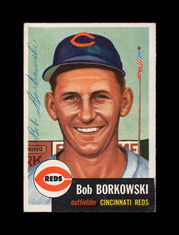

Topps & Bazooka
Founded in Brooklyn in 1938, Topps had early success with an innovative product, Bazooka Gum. Next, it went head-to-head with Bowman Gum, and started producing baseball cards in 1951. After five glorious years of trying to out do one another, the two companies became one when Bowman was sold to Topps after the 1955 season. Thus began Topps' dominance of the baseball card market, which continues to this day, although the company is set to lose its exclusive MLB deal in 2025. The cards pictured here were all made in Duryea, Penn. They were sold in wax packs that came with bubble gum, and in cellophane packs and vending machines that didn't. Along the way, they became an essential part of childhood for several generations of kids.

Topps arrived on the scene in 1951 with five small sets, including two series of game cards (Red Backs and Blue Backs), two series of die-cut players (Connie Mack All-Stars and current All-Stars) and one series of team cards.


Topps came out with its landmark 1952 set the following year. The cards were big, colorful and included stats on the back for the first time. Not only did the set's arrival serve notice to Bowman that its days were numbered, but the set today is arguably the most popular in the hobby — in part due to its inclusion of many expensive and somewhat rare cards, including the famously overpriced Mickey Mantle non-rookie.


Over the next three years, Topps experimented with an array of designs that emphasized bold and contrasting colors. In 1954, the company did the first of three straight sets that paired a portrait with an action shot. In 1955, a second set of cards, Double Headers, drew its inspiration from the 1911 Mecca Double Folders.


Topps really hit its stride in 1956 and 1957. In '56, the first year without any competition from Bowman, the company improved upon its 1955 design by adding stadium backgrounds, along with action shots. The set also introduces the idea of the team card, and includes the final card of Jackie Robinson, who would retire after the season.


While Topps revolutionized baseball cards with its 1952 set, the company's 1957 set was just as important. For the first time ever, Topps used color photos and included career stats on the back. They also introduced the first 2 1/2 x 3 1/2 card, which remains the industry's standard to this day.

©2024

































































































